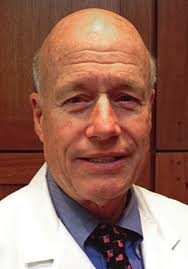I would like to thank everyone who supported the Foundation of the National Lipid Association in 2018 by volunteering to work on our patient resource initiatives or awareness campaigns, attending a fundraiser, purchasing a Lipids Are My Life shirt at an NLA conference, speaking with your colleagues and patients about the Foundation or making a donation.
Article By:
Q: Could you tell us about what drew you to preventive cardiology?
Article By:
Introduction
Article By:
This year promises to be an important turning point for the Pacific Lipid Association (PLA). Our goal is to reinvigorate our membership through greater opportunities to serve the PLA and National Lipid Association (NLA). This can only be done by improving member communication and engaging our membership in activities that are both personally rewarding and promote the mission and goals of the PLA/NLA.
Article By:
CASE STUDY
This case has unanswered questions but shows how a cardiologist and nurse practitioner who became certified lipid specialists create a team approach for their patient.
MS. TAYLOR AND DR. GREENFIELD:
Article By:
Inflammation is a dynamic process with many interconnected signaling pathways involving multiple classes of cells by which the human body responds to pathogen exposure and/or tissue damage, playing a central role in all stages of atherosclerosis. (1) Cholesterol crystals directly activate nucleotide-binding oligomerization domain-like receptor protein 3 (NLRP3) inflammasome and interleukin 1 beta (IL-1β) production.
Article By:
Along with lipid accumulation, inflammation plays a key role in the development of atherosclerosis.(1) Perhaps 3-hydroxy-3-methylglutaryl coenzyme A reductase (HMG CoA reductase) inhibitors (statins) are effective in the prevention of atherosclerotic cardiovascular disease (ASCVD) because they significantly decrease low-density lipoprotein (LDL) particles and inflammation.
Article By:
Atherosclerosis is widely recognized as a chronic inflammatory disorder. Therapies with anti-inflammatory effects in patients with an increased inflammatory status can reduce cardiovascular events, as the CANTOS study showed.(1) Inflammatory markers are an essential tool for evaluating a patient’s inflammatory state. The question is: which biomarker is best?
Article By:
Differentiating Biological Targets for Cardiovascular Risk Reduction from Risk Assessment Tools
Cardiovascular disease (CVD) remains the leading cause of mortality across the globe. The cornerstones of CVD prevention and treatment are accurate risk assessment — such that the intensity of preventive treatment matches the magnitude of absolute risk — and targeting biological markers that are known to mediate CV risk, respectively.
Article By:
Introduction





.jpg)
.png)






























